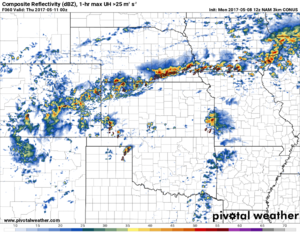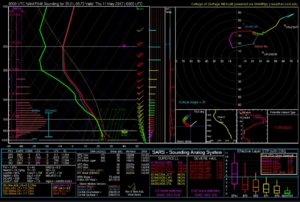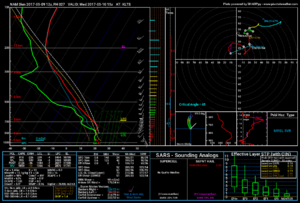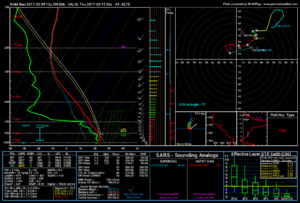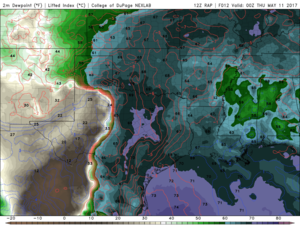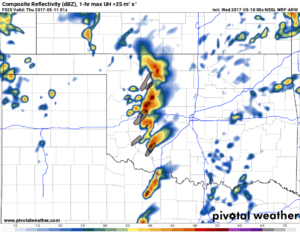I'm sure many of you have been paying attention to the one feint gleam of hope for active weather in Tornado Alley in the foreseeable future. Wednesday appears to have potential for severe weather across the southern Plains.
The GFS has been pretty consistently showing a cut off low oozing eastward across the southwest US and eventually getting re-ingested into the main flow (northwesterly of course, because 2017). It contains sufficient mid-level flow and advects enough for typical synoptic scale cyclogenesis to occur and for adequate shear for supercells. There are potential phasing issues, but it appears Wednesday, rather than Thursday, will be the day for the traditional region of W TX/W OK/KS to see the greatest threat. Moisture is more than adequate for severe weather; lapse rates are pretty good (not much of an EML, so no huge issues with capping); and low-level shear looks okay (not great).
The biggest fly in the ointment for this system (did I mention VB showing up in soundings?) is persistent convection covering the warm sector throughout the day. This convection is probably the result of the weak capping, as it looks like CIN will erode by 18Z, and there isn't very strong low-level WAA to suggest any other reason for widespread convection so early. I've been watching successive GFS runs hoping it changes its tune as to the degree of coverage of precip during the day, but it has remained annoyingly consistent with it. However, in spite of the forecast widespread coverage, I was actually able to find a PDS TOR forecast sounding from the GFS, so maybe there's hope.
The event is actually in range of the MPAS, and the MPAS offers a more hopeful solution, progging multiple rounds of somewhat less widespread convection across mainly TX and OK throughout the day. However, it goes a little crazy with a cellular storm outbreak across the N TX PH, OK PH, and ext. SW KS, including some rotating storms. So maybe...
MPAS eye candy. Get a good look now because it will probably not look this good later on (pessimism speaking):
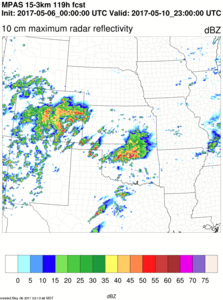
The GFS has been pretty consistently showing a cut off low oozing eastward across the southwest US and eventually getting re-ingested into the main flow (northwesterly of course, because 2017). It contains sufficient mid-level flow and advects enough for typical synoptic scale cyclogenesis to occur and for adequate shear for supercells. There are potential phasing issues, but it appears Wednesday, rather than Thursday, will be the day for the traditional region of W TX/W OK/KS to see the greatest threat. Moisture is more than adequate for severe weather; lapse rates are pretty good (not much of an EML, so no huge issues with capping); and low-level shear looks okay (not great).
The biggest fly in the ointment for this system (did I mention VB showing up in soundings?) is persistent convection covering the warm sector throughout the day. This convection is probably the result of the weak capping, as it looks like CIN will erode by 18Z, and there isn't very strong low-level WAA to suggest any other reason for widespread convection so early. I've been watching successive GFS runs hoping it changes its tune as to the degree of coverage of precip during the day, but it has remained annoyingly consistent with it. However, in spite of the forecast widespread coverage, I was actually able to find a PDS TOR forecast sounding from the GFS, so maybe there's hope.
The event is actually in range of the MPAS, and the MPAS offers a more hopeful solution, progging multiple rounds of somewhat less widespread convection across mainly TX and OK throughout the day. However, it goes a little crazy with a cellular storm outbreak across the N TX PH, OK PH, and ext. SW KS, including some rotating storms. So maybe...
MPAS eye candy. Get a good look now because it will probably not look this good later on (pessimism speaking):


